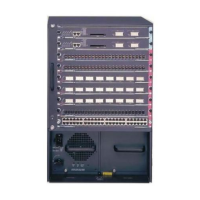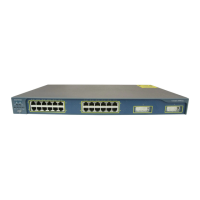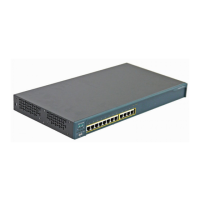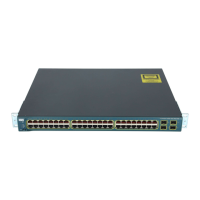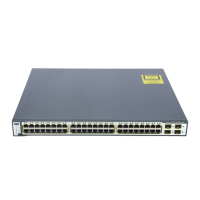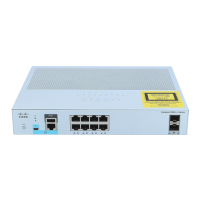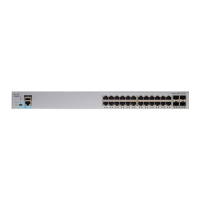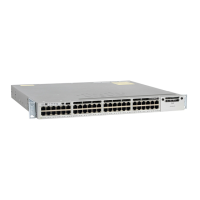5-2
Catalyst 6500 Series Switch Software Configuration Guide—Release 8.7
OL-8978-04
Chapter 5 Configuring Ethernet VLAN Trunks
Understanding How VLAN Trunks Work
You can configure a trunk on a single Ethernet port or on an EtherChannel bundle. For more information
about EtherChannel, see Chapter 6, “Configuring EtherChannel.”
Ethernet trunk ports support five different trunking modes (see Table 5-1). In addition, you can specify
whether the trunk will use ISL encapsulation, 802.1Q encapsulation, or whether the encapsulation type
will be autonegotiated.
For trunking to be autonegotiated, the ports must be in the same VLAN Trunking Protocol (VTP)
domain. However, you can use the on or nonegotiate mode to force a port to become a trunk, even if it
is in a different domain. For more information on VTP domains, see Chapter 10, “Configuring VTP.”
Trunk negotiation is managed by the Dynamic Trunking Protocol (DTP). DTP supports autonegotiation
of both ISL and 802.1Q trunks.
Trunking Modes and Encapsulation Type
Note For a complete list of modules that do not support ISL encapsulation, refer to the Catalyst 6500 Series
Release Notes at this URL:
http://www.cisco.com/en/US/products/hw/switches/ps708/prod_release_notes_list.html
Table 5-1 lists the trunking modes that are used with the set trunk command and describes how they
function on Fast Ethernet, Gigabit Ethernet, and 10-Gigabit Ethernet ports.
Table 5-2 lists the encapsulation types that are used with the set trunk command and describes how they
function on Ethernet ports. You can enter the show port capabilities command to determine which
encapsulation types that a particular port supports.
Table 5-1 Ethernet Trunking Modes
Mode Function
on Puts the port into permanent trunking mode and negotiates to convert the link into a trunk link. The port
becomes a trunk port even if the neighboring port does not agree to the change.
off Puts the port into permanent nontrunking mode and negotiates to convert the link into a nontrunk link. The
port becomes a nontrunk port even if the neighboring port does not agree to the change.
desirable Makes the port actively attempt to convert the link to a trunk link. The port becomes a trunk port if the
neighboring port is set to on, desirable, or auto mode.
auto Makes the port willing to convert the link to a trunk link. The port becomes a trunk port if the neighboring
port is set to on or desirable mode. This is the default mode for all Ethernet ports.
nonegotiate Puts the port into permanent trunking mode but prevents the port from generating DTP frames. You must
configure the neighboring port manually as a trunk port to establish a trunk link.
